
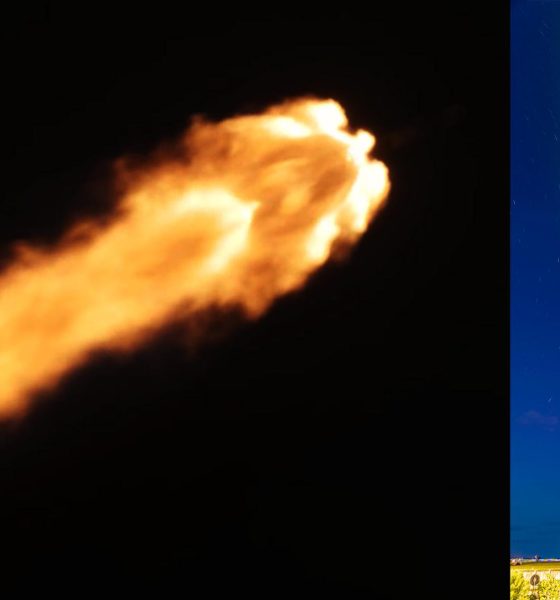
News
SpaceX rockets private astronaut crew into orbit for the first time in spaceflight history
For the first time in spaceflight history, a crew of all-private astronauts have rocketed into orbit – and on a SpaceX Falcon 9 rocket and Crew Dragon spacecraft.
Right on schedule, just before 8:03 pm EDT, an orbit-proven Crew Dragon spacecraft lifted off from Kennedy Space Center Pad 39A on a twice-flown Falcon 9 booster and new upper stage. Making it look easy, the booster performed flawlessly on its third spaceflight, boosting Dragon towards orbit and nailing a landing aboard drone ship Just Read The Instructions (JRTI). About 2.5 minutes after launch, Falcon 9’s upper stage took over and burned for another six minutes to precisely inject the spacecraft and its unprecedented all-private crew of Inspiration4 astronauts into an approximately 200 km (125 mi) parking orbit.
With that single feat, SpaceX has boosted the number of private citizens that have reached Earth orbit by 50% – from 8 to 12. Unlike any of the eight other private orbital spaceflights in history, though, Crew Dragon will now use its built-in Draco maneuvering thrusters to boost its orbital apogee (peak) to around 575 km (357 mi) – the highest altitude reached by private citizens in the history of spaceflight and by astronauts in general since 2009.
Assuming Dragon successfully reaches its planned apogee, Inspiration4 will mark the seventh-highest stable Earth orbit ever reached by humans and the first private (orbital) launch to fly astronauts in a flight-proven spacecraft. Heralding the array of firsts it marked, Inspiration4’s launch window also coincidentally opened just half an hour after sunset at Cape Canaveral, Florida, providing a famously spectacular view to onlookers as Falcon 9 and Dragon ascended back into sunlight for the majority of the launch.
Against the night sky present for those on the ground, the rocket’s miles-long and miles-wide exhaust plume was lit up by the long-since-set sun, producing an affectionately named ‘jellyfish’ that was visible for hundreds of miles.
Created by billionaire and mission commander Jared Isaacman, Inspiration4 could mark a turning point for genuine orbital space tourism, which has been limited to just eight private citizens in the history of spaceflight. While Dragon is far from affordable, with seats believed to cost tens of millions of dollars each, a combination of factors mean that it might be the first spacecraft in history to truly enable orbital space tourism at an unprecedented scale. Already, SpaceX has another four – and possibly five – Crew Dragon launches of four astronauts each scheduled to fly in just the next two years, more than doubling the number of private citizens that have reached orbit if all goes to plan.
Hinted at by its name, Inspiration4’s primary goal has been to inspire people around the world and to hopefully raise awareness that humanity is on the cusp of a future where spaceflight will be accessible to millions – not hundreds – of people. Inspiration4 member Haley Arceneaux is now the youngest American, first person with a prosthetic device, and first cancer survivor to reach orbit. Thanks to the mission, Dr. Sian Proctor has also become the first black woman in history to pilot a spacecraft to space or orbit.
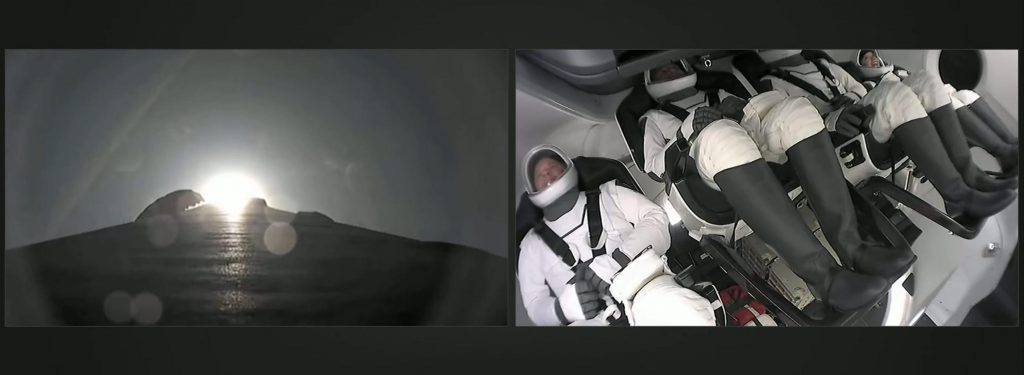

Further, on top of $100M to be donated by Isaacman himself, Inspiration4 has managed to raise almost $35M in donations for St. Jude’s Children’s Hospital – one of the foremost cancer research and treatment hospitals in the US and the world.
Last but not least, the mission will also debut the largest spacecraft window ever flown in space or orbit – a modification to Crew Dragon called a cupola that SpaceX has now designed, built, qualified, and launched in less than a year.

News
Tesla shares epic 2025 recap video, confirms start of Cybercab production
The cinematic montage, posted by the official Tesla account on X, celebrated the company’s progress in EVs, energy, and Robotaxi development.
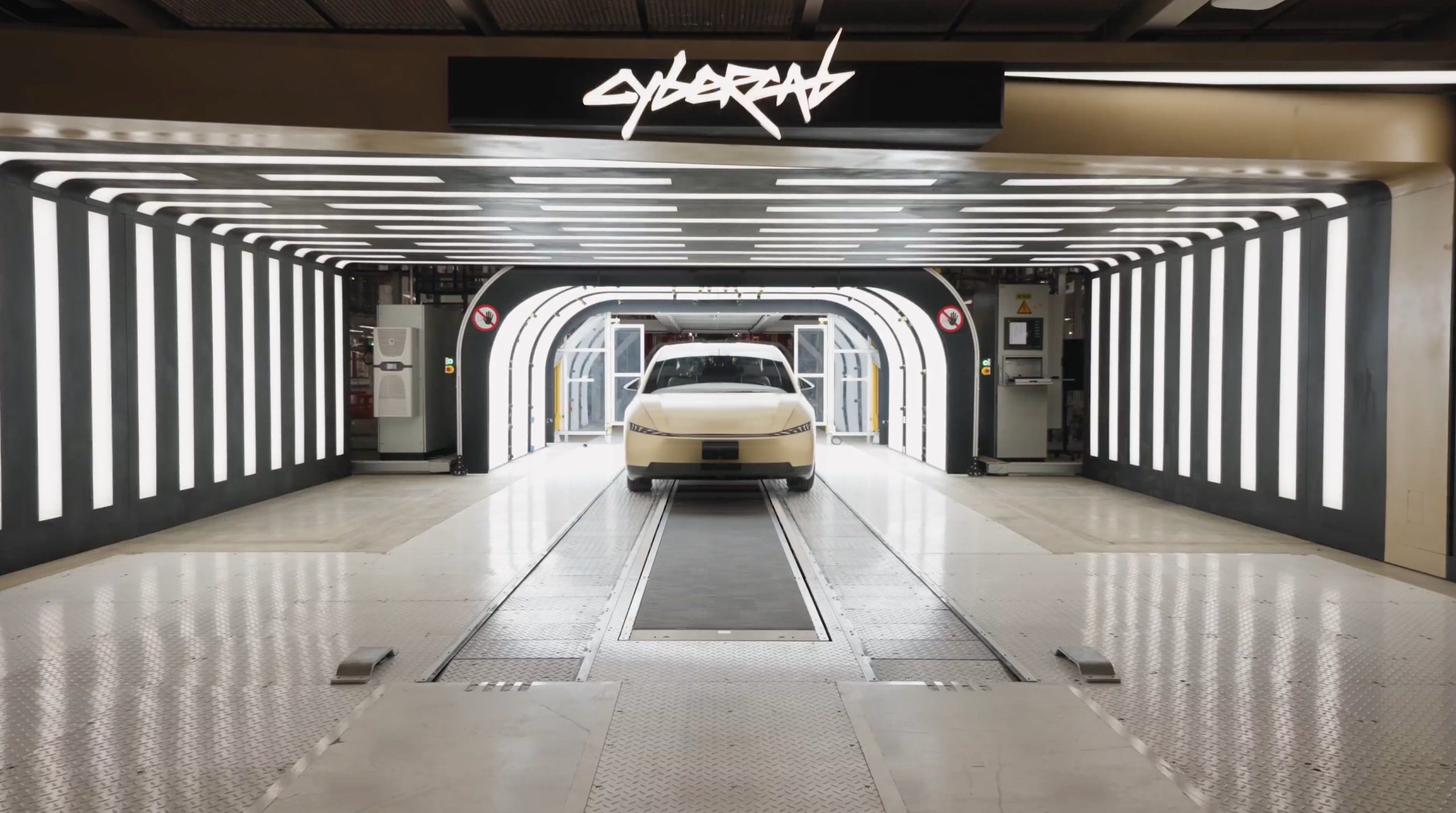
Tesla has released an epic year-in-review video for 2025, recapping some of its major achievements from refreshed models to autonomy breakthroughs and production ramps.
The cinematic montage, posted by the official Tesla account on X, celebrated the company’s progress in EVs, energy, and Robotaxi development while looking ahead to an even bigger 2026.
Tesla’s 2025 highlights recap
Tesla has had a busy 2025, as highlighted in the recap video. The video opened with Elon Musk explaining the company’s pursuit of sustainable abundance. A number of milestones were then highlighted, such as the rollout of FSD v14, Optimus’ numerous demos, the opening of the Tesla Diner in Hollywood, LA, the completion of the world’s first autonomous car delivery, and the launch of the Robotaxi network in Austin and the San Francisco Bay Area.
Tesla also highlighted several of its accomplishments over the year. As per the company, the Model Y was the year’s best-selling vehicle globally again, and Teslas became more affordable than ever thanks to the Model 3 and Model Y Standard. Other key models were also rolled out, such as the refreshed Model S and X, as well as the new Model Y, the new Model Y Performance, and the six-seat, extended wheelbase Model Y L.
The Megablock was also unveiled during the year, and the Supercharger Network grew by 18%. Over 1 million Powerwalls were also installed during the year, and the Cybertruck became the first EV truck to get both an IIHS Top Safety Pick+ award and an NHTSA 5-Star safety rating.
Cybercab production confirmed
Interestingly enough, Tesla also confirmed in its 2025 recap video that the production of the Cybercab has started. This bodes well for the vehicle, as it could result in the vehicle really being mass-produced in the first half of 2026. Elon Musk confirmed during the 2025 Annual Shareholder Meeting that Cybercab production should earnestly start around April 2026.
Musk has also noted that the Cybercab will be Tesla’s highest-volume vehicle yet, with the company aiming for an annual production rate of about 2 million units. “If you’ve seen the design of the Cybercab line, it doesn’t look like a normal car manufacturing line,” Musk said earlier this year. “It looks like a really high-speed consumer electronics line. In fact, the line will move so fast that actually people can’t even get close to it.”
News
Tesla Cybercab is changing the look of Austin’s roads, and it’s not even in production yet
Videos and photos showed the sleek, two-seat autonomous vehicles navigating traffic.
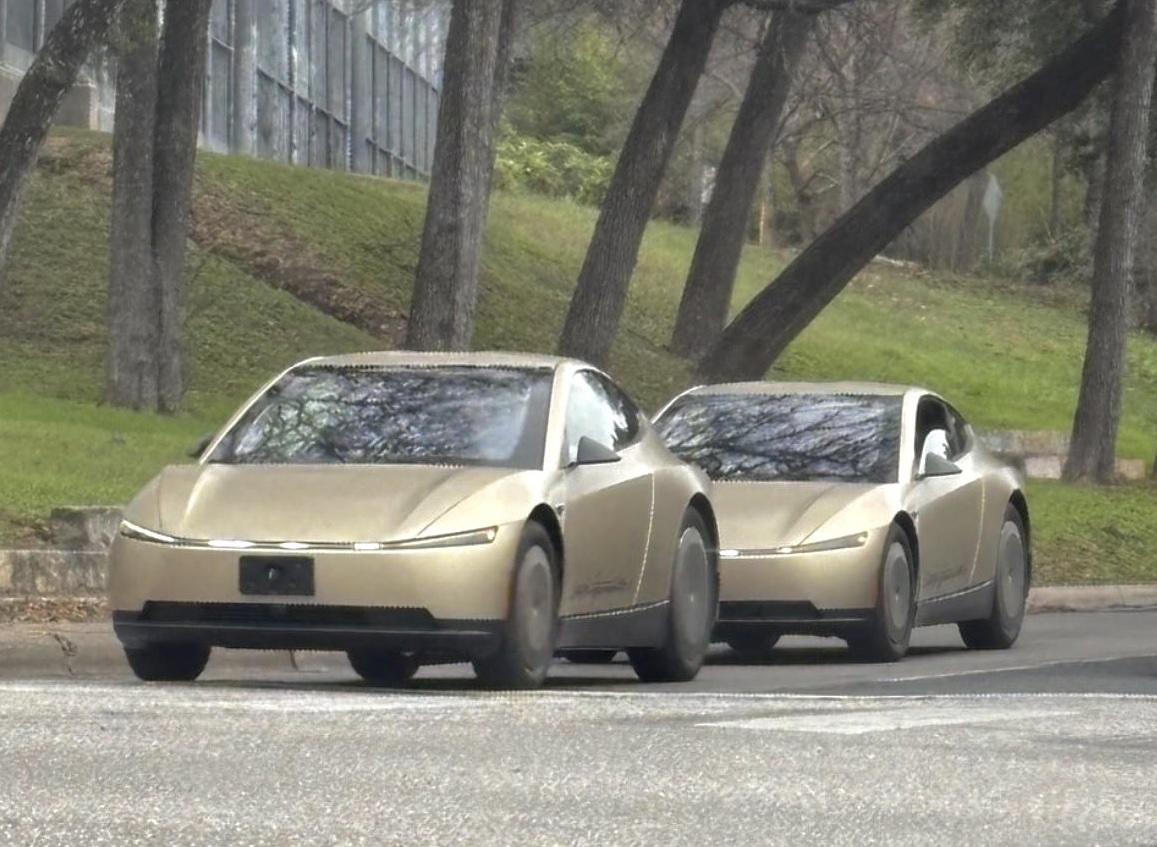
Even before entering production, Tesla’s Cybercab is already transforming the appearance of Austin’s streets, with multiple prototypes spotted testing in downtown areas recently.
Videos and photos showed the sleek, two-seat autonomous vehicles navigating traffic. Interestingly enough, the vehicles were equipped with temporary steering wheels and human safety drivers.
Recent Cybercab sightings
Over the weekend, enthusiasts captured footage of two Cybercabs driving together in central Austin, their futuristic silhouettes standing out amid regular traffic. While the vehicles featured temporary steering wheels and side mirrors for now, they retained their futuristic, production-intent exterior design.
Industry watcher Sawyer Merritt shared one of the vehicles’ videos, noting the increasing frequency of the autonomous two-seater’s sightings.
Previewing the autonomous future
Sightings of the Cybercab have been ramping in several key areas across the United States in recent weeks. Sightings include units at Apple’s Visitor Center in California, the Fremont factory test track, and in Austin’s streets.
The increased activity suggests that Tesla is in overdrive, validating the autonomous two-seater ahead of its planned volume production. Elon Musk confirmed at the 2025 Shareholder Meeting that manufacturing begins around April 2026 with ambitious targets, and during an All-Hands meeting earlier this year, Musk hinted that ultimately, Tesla’s factories should be able to produce one Cybercab every 10 seconds.
News
Tesla celebrates 9 million vehicles produced globally
The achievement, announced by Tesla Asia on X, celebrated not just the Shanghai team’s output but the company’s cumulative production across all its factories worldwide.
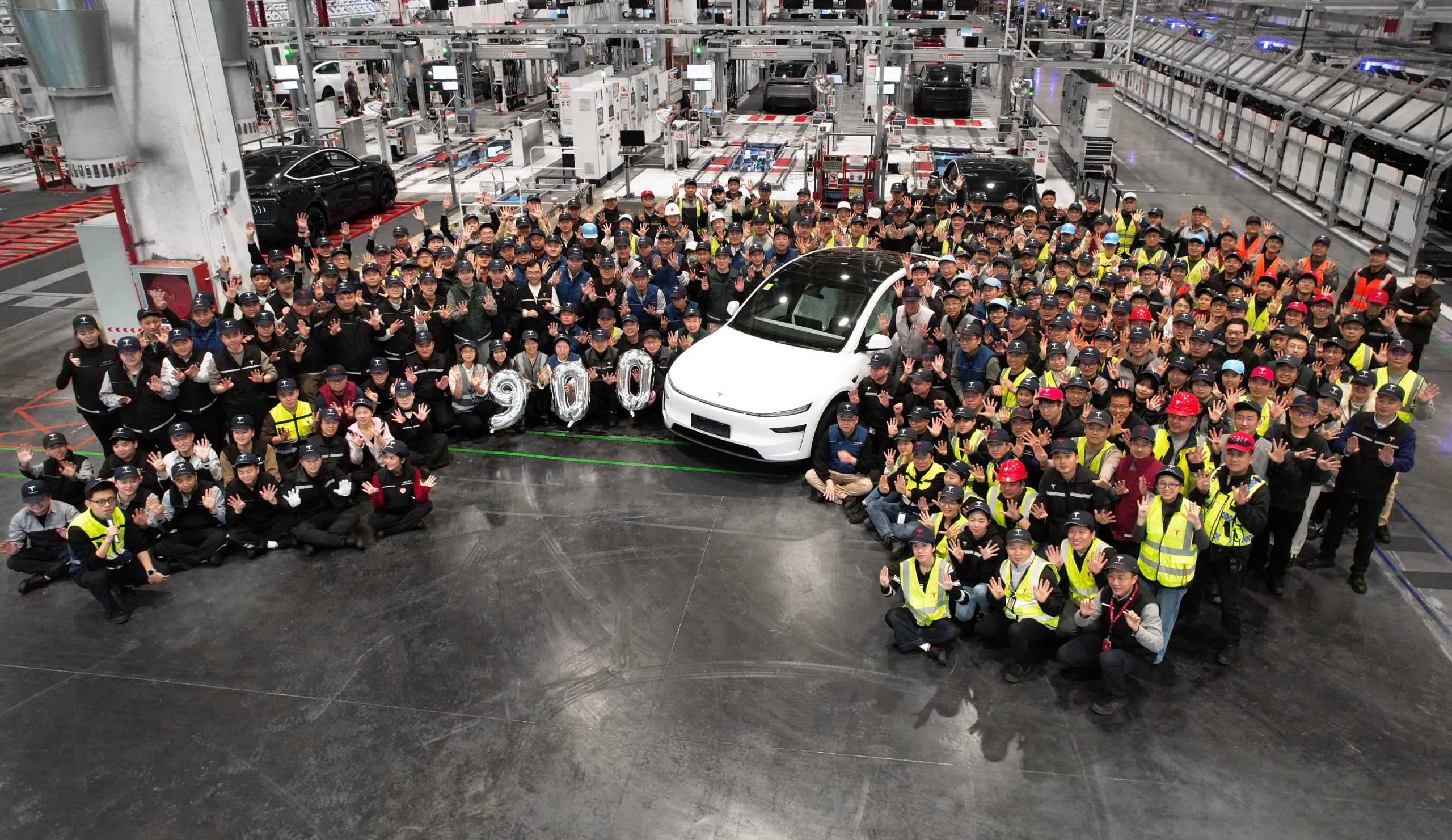
Tesla has achieved a new milestone, rolling out its nine millionth vehicle worldwide from Giga Shanghai.
The achievement, announced by Tesla Asia on X, celebrated not just the Shanghai team’s output but the company’s cumulative production across all its factories worldwide. The milestone came as 2025 drew to a close, and it inspired praise from some of the company’s key executives.
Tesla’s 9 million vehicle milestone
The commemorative photo from Tesla Asia featured the Giga Shanghai team assembled on the factory floor, surrounding the milestone Model Y unit, which looked pristine in white. The image was captioned: “Our 9 millionth vehicle globally has just rolled off the production line at Giga Shanghai. Thanks to our owners and supporters around the world.”
Senior Vice President of Automotive Tom Zhu praised Tesla’s factory teams for the remarkable milestone. He also shared his gratitude to Tesla owners for their support. “Congrats to all Tesla factories for this amazing milestone! Thanks to our owners for your continued support!” Zhu wrote in a post on X.
Giga Shanghai’s legacy
Tesla’s nine million vehicle milestone is especially impressive considering that just 207 days ago, the company announced that it had built its eight millionth car globally. The eight millionth Tesla, a red Model Y, was built in Giga Berlin. The fact that Tesla was able to build a million cars in less than seven months is quite an accomplishment.
Giga Shanghai, Tesla’s largest factory by volume, has been instrumental to the company’s overall operations, having reached four million cumulative vehicles earlier in 2025. The plant produces Model 3 and Model Y for both domestic Chinese and export markets, making it the company’s primary vehicle export hub.








